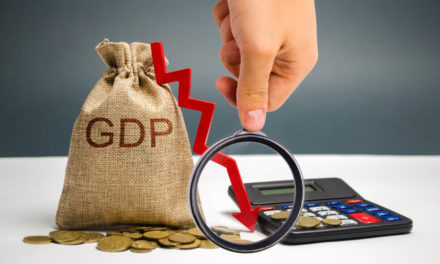Former Fed Chair Janet Yellen said Monday that the recent inversion of the yield curve between the 3-month and 10-year Treasury notes could signal the need for an interest rate cut and not be the harbinger of a prolonged recession.
Stocks tanked on Friday after the inversion of the yield curve in the U.S. bond markets. This generally occurs with short-term rates pass their long-term counterparts, hurting bank lending profits and signaling a weakening in the long-term forecast for the economy.
Yellen was asked whether she thought a recession was imminent during a conference in Hong Kong after the inversion.
Per CNBC:
“My own answer is no, I don’t see it as a signal of recession,” Yellen said during a question and answer session at the Credit Suisse Asian Financial Conference.
“In contrast to times past, there’s a tendency now for the yield curve to be very flat,” she said, adding that it’s now easier for it to invert — which traditionally meant investors had become concerned about a future downturn. In technical terms, it’s when the spread between the three-month Treasury bill yield and the 10-year note rate turns negative, which happened on Friday for the first time since 2007.
“And in fact it might signal that the Fed would at some point need to cut rates, but it certainly doesn’t signal that this is a set of developments that would necessarily cause a recession,” Yellen added.
Yellen, a distinguished resident fellow at the Brookings Institution, said she doesn’t see a recession as “particularly likely” though she did stress that the U.S. economy is indeed slowing.
“The U.S. is certainly experiencing a slowing of growth,” she said. The economy expanded 3.1 percent last year but the Fed’s most recent outlook is for growth of 2.1 percent this year, which Yellen said is close to potential.
“So that’s not a dangerous situation,” she said. “So, yes, growth is slowing, but I don’t see it slowing to a level that will cause a recession.”
Under her tenure, the Fed in December 2015 raised its key interest rate for the first time n nearly a decade. It was the start of an effort to hike rates back to a point where policymakers could have some leeway to reduce them again in the face of any future downturn in the world’s largest economy. The Fed under her successor, Chairman Jerome Powell, had continued to nudge rates higher.
But the policymaking Federal Open Market Committee decided last week in a unanimous decision to hold them steady, indicating that it’s likely that no more increases will come this year in a sharp dovish turn from projections in December. The FOMC in a post-meeting statement indicated it would remain “patient” before adopting any further rate increases.




